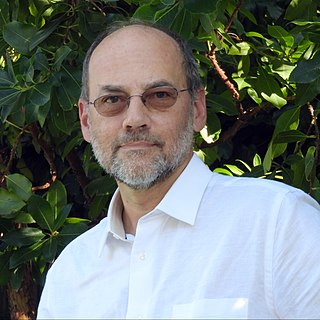| Developer(s) | University of California, Berkeley |
|---|---|
| Stable release | 11.0.1 / 2018-06-18 |
| Operating system | Linux, Mac OS X, Windows |
| Type | Model based design, visual programming language |
| License | BSD License |
| Website | ptolemy.berkeley.edu |
The Ptolemy Project is an ongoing project aimed at modeling, simulating, and designing concurrent, real-time, embedded systems. The focus of the Ptolemy Project is on assembling concurrent components. The principal product of the project is the Ptolemy II model based design and simulation tool. The Ptolemy Project is conducted in the Industrial Cyber-Physical Systems Center (iCyPhy) in the Department of Electrical Engineering and Computer Sciences of the University of California at Berkeley, and is directed by Prof. Edward A. Lee.

In computer science, concurrency is the ability of different parts or units of a program, algorithm, or problem to be executed out-of-order or in partial order, without affecting the final outcome. This allows for parallel execution of the concurrent units, which can significantly improve overall speed of the execution in multi-processor and multi-core systems. In more technical terms, concurrency refers to the decomposability property of a program, algorithm, or problem into order-independent or partially-ordered components or units.
In computer science, real-time computing (RTC), or reactive computing describes hardware and software systems subject to a "real-time constraint", for example from event to system response. Real-time programs must guarantee response within specified time constraints, often referred to as "deadlines". The correctness of these types of systems depends on their temporal aspects as well as their functional aspects. Real-time responses are often understood to be in the order of milliseconds, and sometimes microseconds. A system not specified as operating in real time cannot usually guarantee a response within any timeframe, although typical or expected response times may be given.

An embedded system is a controller programmed and controlled by a real-time operating system (RTOS) with a dedicated function within a larger mechanical or electrical system, often with real-time computing constraints. It is embedded as part of a complete device often including hardware and mechanical parts. Embedded systems control many devices in common use today. Ninety-eight percent of all microprocessors manufactured are used in embedded systems.
The key underlying principle in the project is the use of well-defined models of computation that govern the interaction between components. A major problem area being addressed is the use of heterogeneous mixtures of models of computation. [1]
In computer science, and more specifically in computability theory and computational complexity theory, a model of computation is a model which describes how an output of a mathematical function is computed given an input. A model describes how units of computations, memories, and communications are organized. The computational complexity of an algorithm can be measured given a model of computation. Using a model allows studying the performance of algorithms independently of the variations that are specific to particular implementations and specific technology.
The project is named after Claudius Ptolemaeus, the 2nd century Greek astronomer, mathematician, and geographer.

Claudius Ptolemy was a Greco-Roman mathematician, astronomer, geographer and astrologer. He lived in the city of Alexandria in the Roman province of Egypt, wrote in Koine Greek, and held Roman citizenship. The 14th-century astronomer Theodore Meliteniotes gave his birthplace as the prominent Greek city Ptolemais Hermiou in the Thebaid. This attestation is quite late, however, and, according to Gerald Toomer, the translator of his Almagest into English, there is no reason to suppose he ever lived anywhere other than Alexandria. He died there around AD 168.
The Kepler Project, a community-driven collaboration among researchers at three other University of California campuses has created the Kepler scientific workflow system which is based on Ptolemy II.

The University of California (UC) is a public university system in the U.S. state of California. Under the California Master Plan for Higher Education, the University of California is a part of the state's three-system public higher education plan, which also includes the California State University system and the California Community Colleges System.
Kepler is a free software system for designing, executing, reusing, evolving, archiving, and sharing scientific workflows. Kepler's facilities provide process and data monitoring, provenance information, and high-speed data movement. Workflows in general, and scientific workflows in particular, are directed graphs where the nodes represent discrete computational components, and the edges represent paths along which data and results can flow between components. In Kepler, the nodes are called 'Actors' and the edges are called 'channels'. Kepler includes a graphical user interface for composing workflows in a desktop environment, a runtime engine for executing workflows within the GUI and independently from a command-line, and a distributed computing option that allows workflow tasks to be distributed among compute nodes in a computer cluster or computing grid. The Kepler system principally targets the use of a workflow metaphor for organizing computational tasks that are directed towards particular scientific analysis and modeling goals. Thus, Kepler scientific workflows generally model the flow of data from one step to another in a series of computations that achieve some scientific goal.






